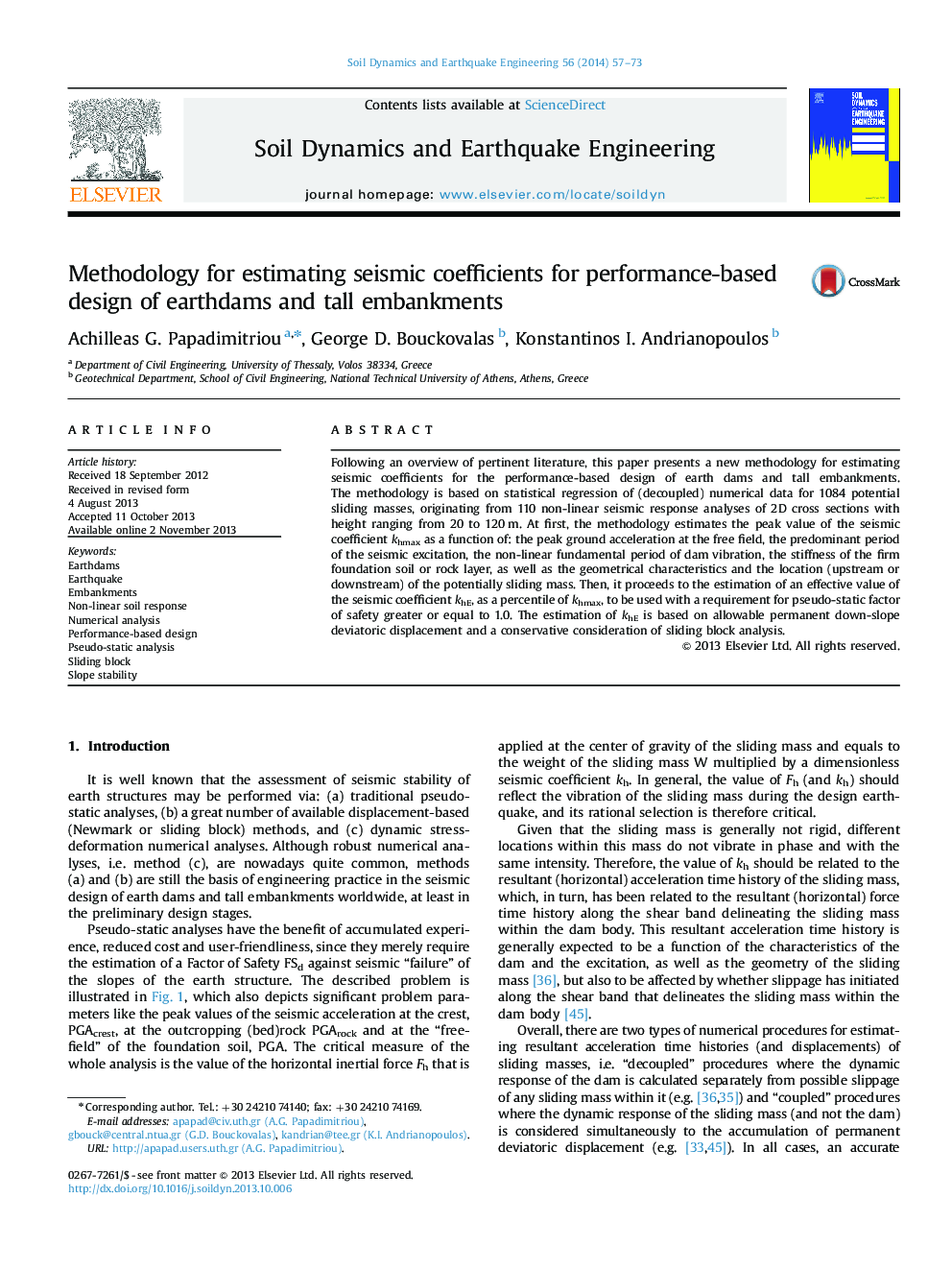| Article ID | Journal | Published Year | Pages | File Type |
|---|---|---|---|---|
| 304130 | Soil Dynamics and Earthquake Engineering | 2014 | 17 Pages |
•We propose a decoupled methodology for estimating seismic coefficients for earthdams.•It incorporates performance-based design concepts to pseudo-static stability analysis.•Peak coefficient is a function of dam, excitation and sliding mass characteristics.•Sliding factor reduces peak coefficient to its effective value (for use with FS≥1).•Sliding factor estimated via sliding block theory on basis of allowable displacement.
Following an overview of pertinent literature, this paper presents a new methodology for estimating seismic coefficients for the performance-based design of earth dams and tall embankments. The methodology is based on statistical regression of (decoupled) numerical data for 1084 potential sliding masses, originating from 110 non-linear seismic response analyses of 2D cross sections with height ranging from 20 to 120 m. At first, the methodology estimates the peak value of the seismic coefficient khmax as a function of: the peak ground acceleration at the free field, the predominant period of the seismic excitation, the non-linear fundamental period of dam vibration, the stiffness of the firm foundation soil or rock layer, as well as the geometrical characteristics and the location (upstream or downstream) of the potentially sliding mass. Then, it proceeds to the estimation of an effective value of the seismic coefficient khE, as a percentile of khmax, to be used with a requirement for pseudo-static factor of safety greater or equal to 1.0. The estimation of khE is based on allowable permanent down-slope deviatoric displacement and a conservative consideration of sliding block analysis.
